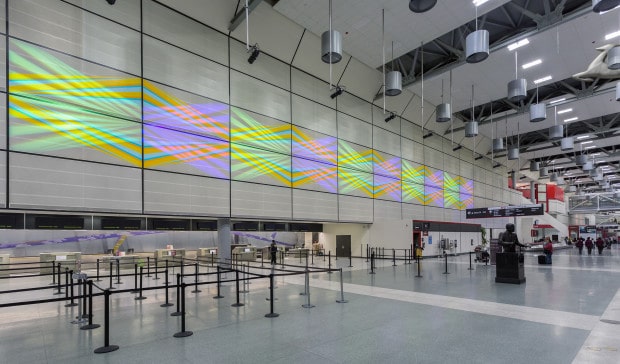
I’m not really sure that I have words for the excellence that this contains.
O (Omicron) from Romain Tardy (AntiVJ) on Vimeo.
Romain Tardy and Thomas Vaquié are the creating artists on this one — from the AntiVJ Blog:
Last year, we were approached to create our first permanent installation for the new museum of architecture of Hala Stulecia, in Wroclaw, Poland. The piece — that we called O (Omicron), is actually the last part of the visit, and a way to create a link between the rich history of the building and the present times, by turning this massive concrete structure into a lively architecture.
When opened, Hala Stulecia was the largest reinforced concrete structure in the world. With a diameter of 65m it was home to the largest dome built since the Pantheon in Rome eighteen centuries earlier.
The Centennial Hall was listed as a UNESCO World Heritage Site in 2006.It is reasonable to think that when Hala Stulecia was built in 1913 Max Berg’s ambition for his construction was to pass the test of time. What could have been his vision of the monument in the distant future? How did he imagine the olding of the materials? The evolution of the surrounding urbanism and populations?
The piece proposed for the Centennial Hall of Wroclaw is based around the notion of timelessness in architecture, and the idea of what future has meant throughout the 20th century.
Taking the 1910’s as a starting point (the dome was erected in 1913), historical and artistic references were used to reveal the architecture of the space, its timeless and, more surprisingly, very modern dimension.
This building is called the Hala Stulecia (Centennial Hall); it’s a Max Berg structure, built when the German Empire was still owner of the city of WrocÅ‚aw. Here’s the structure in a way that makes us lighting designers more comfortable, with truss and chain motors in it:
This building is amazing:
When opened, Hala Stulecia was the largest reinforced concrete structure in the world. With a diameter of 65m it was home to the largest dome built since the Pantheon in Rome eighteen centuries earlier. The Centennial Hall was listed as a UNESCO World Heritage Site in 2006. Taking the 1910’s as a starting point (the dome was erected in 1913), historical and artistic references were used to reveal the architecture of the space, its timeless and, more surprisingly, very modern dimension.
A deliberately minimalist visual aesthetic allowed to highlight the very architecture of Hala Stulecia’s dome and re-affirm its place at the core of the piece.
Check out the “Making Of” video, too — below:
O (Omicron) / Making of from Romain Tardy (AntiVJ) on Vimeo.
Thanks, We Waste Time! You guys are one of my favorite blogs lately!





I meant to comment on this when i first read it… Another great reason to go to poland… Fucking awesome!
Comments are closed.